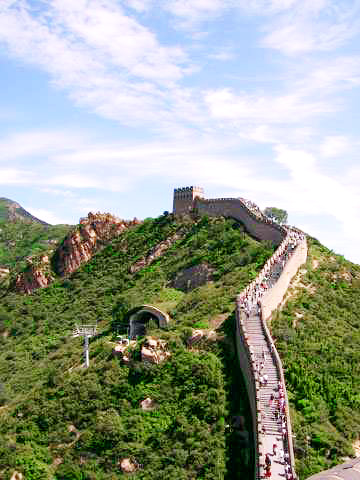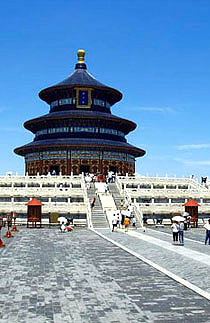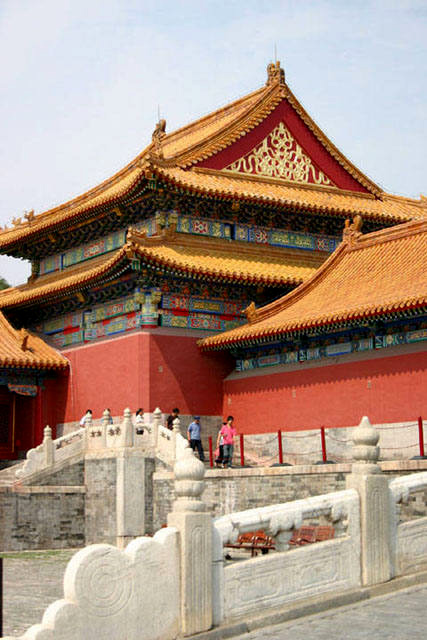Beijing Weather

- Thanks for arranging our wonderful 28 day holiday to China in September. The blend of your arrangements and the few customised stops that we added with extra days, worked very well for us. All the agents did a good job and we thank them all.
-- From Mr. Jones - Indeed we thoroughly enjoyed our trip to China and came back with very fond and delightful memories of the trip. We were very impressed with the quality of service provided by China Tour Guide. With military precision your English speaking Tour Guides and private car drivers were aavailable at each and every airport and cruise embark and disembark points, holding our names in their hands. They helped us at the airports by getting us boarding cards and at tourist sites by organising tickets etc.
-- From Ms. Kirpalani - >>Read More Reviews
Siheyuan Culture
The history of Siheyuan (courtyard house) in Beijing can be traced back to more than 800 years ago when Beijing established its status as the capital city. As a kind of traditional Chinese relic, Siheyuan represents the capital's architectural style.
 |
| The sketch map of a small siheyuan |
In Chinese, Siheyuan means the term "quadrangle", and takes the courtyard as its nucleus, which is surrounded by four houses--a principal house (facing to south mostly), an opposite house, an eastern-wing house and a western-wing house. The construction of Siheyuan explains characteristic features of Chinese people and the strict hierarchical system of ancient times, and emphasizes Fengshui (Chinese traditional theory of geomancy). The whole structure of Siheyuan is symmetrical and enclosed from four sides with privacy and confidentiality, keeping one gate towards outside which is highly suitable for a family to live in and can be protected from exterior intrusion. Given by this point, this structure represents the typical characters of Chinese people--introversion and quiet manner. Besides, in hierarchical society, the principal house is inhabited by the head of family, and his or her eldest son lives in eastern-wing house, which is believed to be superior to western-wing house. Usually, the opposite house, also named reversibly-set room, is given to servants as their quarters, while under some special circumstances like a spinster-daughter, a divorced daughter or a widowed daughter-in-law who had never given birth to a son, all of them have to be ordered to live in opposite house. Therefore, the arrangement of residence is totally based on the rules of hierarchical system, aims to keep the order of family members' status.
 |
 |
| Several peculiar bird-cages of old Beijingers hung in a courtyard. | An old man is reading newspaper quietly and intently sitting on the side of the hutong. |
Undoubtedly, Siheyuan is a mirror of Chinese culture, reflecting the sense of belongs in the mind of Chinese people. The big gate is painted in red, because red symbolizes luck and happiness. During the traditional festivals, gatepost couplet is put on the gate. Moreover, a pair of red lanterns is commonly seen in many large-scaled Siheyuan. Behind the gate, a large screen wall appears as an important decorative part of Siheyuan. Visitors will find the carefully and meticulously carved wall surface and the auspicious eulogies on the screen wall once they go in or out of the gate. In the center of Siheyuan, the courtyard is planted with trees and flowers with two stony paths leading to the houses of each side. Usually, a goldfish pool and a marble table are set in the yard, and birds stand on the rooftop and sing. Siheyuan is a small cosmos and a paradise for residents who can enjoy a wonderful outdoor life here. No wonder so many people are keen on Siheyuan.
Indeed, to know more about Chinese culture and traditions, visiting Siheyuan is a smart choice for you. Staying in the Siheyuan, learning how to make dumplings and enjoying a local Chinese life, you will get unforgettable experience here.
Top Beijing Attractions

-
 Badaling Great Wall: This is the best-preserved and most imposing section of the Great wall is approximately 3,741 meters(2.3 miles) long and was of great strategic importance in ancient times.
Badaling Great Wall: This is the best-preserved and most imposing section of the Great wall is approximately 3,741 meters(2.3 miles) long and was of great strategic importance in ancient times.
-
 Temple of Heaven: This temple complex is an architectural wonder featuring the triple-roofed "Hall of Prayer for Good Harvest" where the emperor went to worship heaven and pray for the coming harvest.
Temple of Heaven: This temple complex is an architectural wonder featuring the triple-roofed "Hall of Prayer for Good Harvest" where the emperor went to worship heaven and pray for the coming harvest.
-
 The Forbidden City: One of the world's most beautiful architectural complexes, this served as China's imperial palace for almost five centuries. Its massive scale and majestic design are overwhelming.
The Forbidden City: One of the world's most beautiful architectural complexes, this served as China's imperial palace for almost five centuries. Its massive scale and majestic design are overwhelming.
-
 Summer Palace: Once serving as the imperial summer getaway, it ranks as one of the most visited and most classical gardens in the world. It's size and splendor will leave you a lasting impression.
Summer Palace: Once serving as the imperial summer getaway, it ranks as one of the most visited and most classical gardens in the world. It's size and splendor will leave you a lasting impression.
| Other Attractions List | |||||||
Recommended China Tours with Beijing
|
||||||
|
||||||
|
||||||
|
||||||
|
||||||
>> More
China Tours More
China Tours |
||||||
Guide for China tour, offers most value & amazing experience. In China, you can rely on us
Copyright © 2001 - 2025. All Rights Reserved to ChinaTourGuide.Com
Hotel Guangzhou | Guizhou Tours | Hong Kong Hotels | 香港酒店 | 广州酒店 | 广州会议酒店 | Indochina Tour
Guide for China tours, offers most value & amazing experience. Chinatourguide.com. Your reliable China tour agency.










